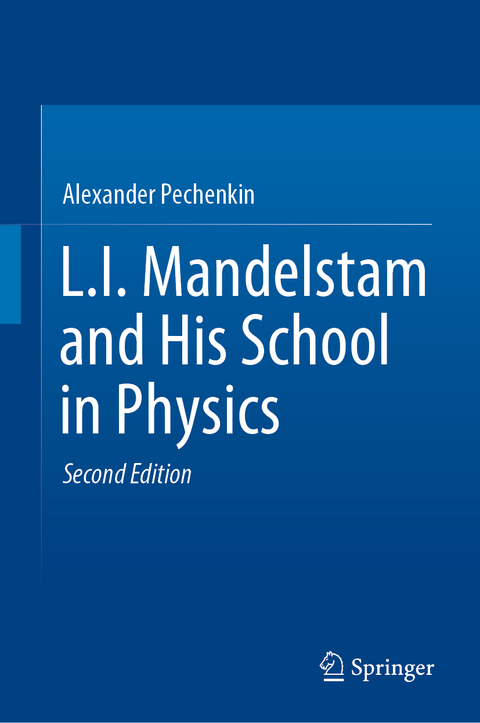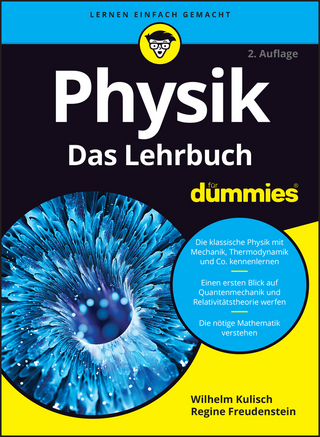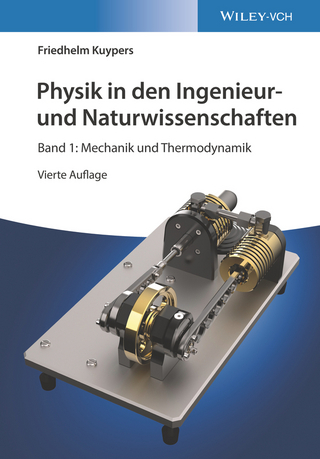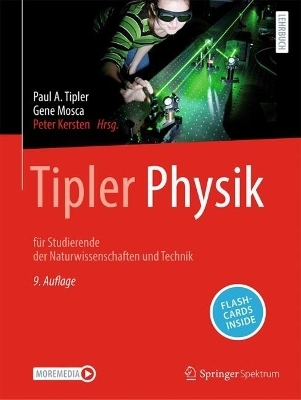
L.I. Mandelstam and His School in Physics
Springer International Publishing (Verlag)
978-3-030-17684-6 (ISBN)
This biography of the famous Soviet physicist Leonid Isaakovich Mandelstam (1889-1944), who became a Professor at Moscow State University in 1925 and an Academician (the highest scientific title in the USSR) in 1929, describes his contributions to both physics and technology. It also discusses the scientific community that formed around him, commonly known as the Mandelstam School. By doing so, it places Mandelstam's life story in its cultural context: the context of German University (until 1914), the First World War, the Civil War, and the development of the Socialist Revolution (until 1925) and the young socialist country. The book considers various general issues, such as the impact of German scientific culture on Russian science; the problems and fates of Russian intellectuals during the revolutionary and post-revolutionary years; the formation of the Soviet Academy of Science, the State Academy; and the transformation of the system of higher education in the USSR duringthe 1920s and 1930s. Further, it reconstructs Mandelstam's philosophy of science and his approach to the social and ethical function of science and science education based on his fundamental writings and lecture notes. This reconstruction is enhanced by extensive use of previously unpublished archive material as well as the transcripts of personal interviews conducted by the author.
The book also discusses the biographies of Mandelstam's friends and collaborators: German mathematician and philosopher Richard von Mises, Soviet Communist Party official and philosopher B.M.Hessen, Russian specialist in radio engineering N.D.Papalexy, the specialists in non-linear dynamics A.A.Andronov, S.E. Chaikin, A.A.Vitt and the plasma physicist M.A.Leontovich.
This second, extended edition reconstructs the social and economic backgrounds of Mandelstam and his colleagues, describing their positions at the universities and the institutes belonging to the Academy of Science. Additionally, Mandelstam's philosophy of science is investigated in connection with the ideological attacks that occurred after Mandelstam's death, particularly the great mathematician A.D.Alexandrov's criticism of Mandelstam's operationalism.
Alexander Alexandrovich Pechenkin graduated from the Mendeleev Moscow Institute of Chemistry and Technology in 1963, and received his Ph.D. from the Institute of Philosophy at the USSR Academy of Sciences in 1968. In 1976 he graduated from the Mechanico-Mathematical Faculty (School) at Lomonosov Moscow State University. In 1985 Pechenkin received his Doctor of Science degree from the Institute of Philosophy. In 1985 he was appointed Professor of History at the USSR Academy of Sciences Science Institute of History of Science and Technology.
Introduction.- Mandelstam's Youth and his Strasbourg Years.- The Strasbourg Period: Radio-Engineering.- The Strasbourg Period: Optics.- The Years of Pilgrimage (1914-1925).- Moscow State University (1925-1935).- Research in Optics: Odessa, Moscow.- The Scientific School of Mandelstam - The Early Steps and Results.- The Mandelstam School. Theory of Non-linear Oscillations.- A Continuation - The Mandelstam-Andronov School.- M.A.Leontovich: From Statistical Physics to Physics of Plasma.- Moscow State University and the Academy of Sciences.- Borovoie and the Last Year in Moscow.- Mandelstam's Operationalism.- L. I. Mandelstam's Interpretation of Quantum Mechanics in the Context of the Discussions of the 1930-1940s.- A. D. Alexandrov Criticizing Mandelstam's Philosophy as it is Presented in his "Complete Works".
| Erscheinungsdatum | 10.10.2019 |
|---|---|
| Zusatzinfo | XIV, 259 p. |
| Verlagsort | Cham |
| Sprache | englisch |
| Maße | 155 x 235 mm |
| Gewicht | 571 g |
| Themenwelt | Naturwissenschaften ► Physik / Astronomie ► Allgemeines / Lexika |
| Schlagworte | Combinatorial Scattering of Light • German Scientific Culture • Mandelstam and Tamm • Mandelstam School • Mandelstam's Life Story • Operationalism for Classical Physics • Physics in the USSR • Radio Engineering • Raman Effect • Scientific Biography of Mandelstam • Social and Ethical Functions of Science • Theory of Oscillations |
| ISBN-10 | 3-030-17684-3 / 3030176843 |
| ISBN-13 | 978-3-030-17684-6 / 9783030176846 |
| Zustand | Neuware |
| Haben Sie eine Frage zum Produkt? |
aus dem Bereich


